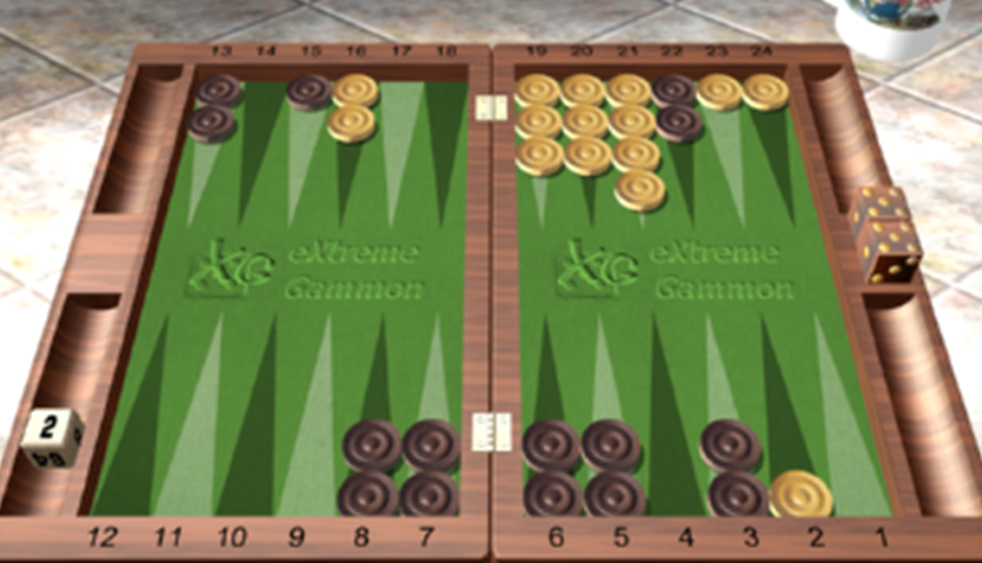Cube Decision: Brown on roll with the score tied 2-2 to 5 points and holding a 2 cube.
Brown is in an advantageous position with one of yellow’s checkers stuck back on the 23-point (brown’s 2-point), spare checkers guarding the outfield and an anchor that is threatening yellow’s stripped 9-point. Is this enough to justify a redouble that could decide the match? Well, it is a tricky question that requires an understanding of the criteria for this type of decision. If Brown doubles and yellow accepts this will be the last game of the match and the value of gammons and redoubles will become irrelevant. If yellow passes the double, brown will be leading 4-2/5 going into the Crawford game and yellow will most likely need to win two games to win the match which is essentially a 25% chance. Therefore, if brown recubes, yellow should accept if they can win this game at least ¼ of the time. Brown’s objective will be to make the 4-point to complete a 6 prime and then simply bring the game home. However, this is far from a certainty and yellow will have many chances to escape the back checker and win the race in the meantime.
An extensive rollout simulation by extreme gammon reveals this to be a very close doubling decision with approximately 70% winning chances for brown. With 30% winning chances, yellow needs to take this double as it is well above the 25% threshold. Brown could not be faulted for playing on to see if the position improves slightly before doubling but there is another factor that must be considered. If yellow passes, which is a distinct possibility in such a complicated position, brown’s match winning prospects will go up considerably from 70% to 75%. There is a rule of thumb in backgammon called Woolsey’s law, which suggests that if you aren’t sure your opponent has a take then you may well have a good double right now! Such is the case here.

Frank is a two-time winner of the Backgammon World Championship in Monte Carlo and current holder of the title. He is a strategic consultant for professional sports teams, and within the sports betting and gaming industries. His work in decision science, critical thinking and sports analytics has been featured in many major news media outlets including ESPN, NFL Network, the New York Times, Fox Sports, Esquire, the Ringer and Showtime. He proudly serves as the co-director of the San Diego Backgammon Club. Learn more: https://frankfrigo.com/


I like backgammon, but this kind of analysis seems a bit over-the-top to me. I would mainly be trying to have fun in a fast paced game while having a few laughs. But to each his own, I guess.
You can have fun and challenge your brain at the same time. Come join us!